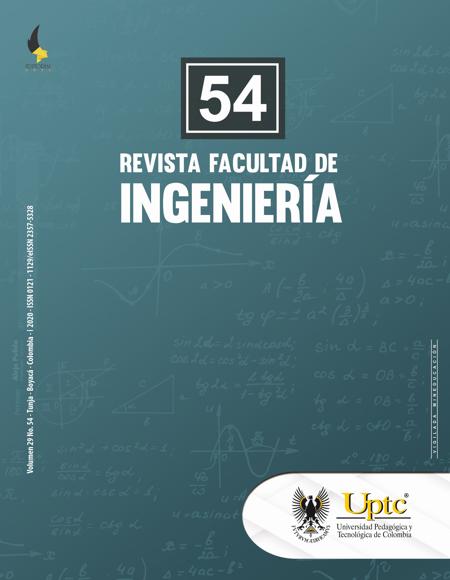Smart Lumini: A Smart Lighting System for Academic Environments Using IOT-Based Open-Source Hardware

Abstract
Rational energy consumption in large buildings depends on both the users' consumption culture and the management systems implemented. In Colombia, few buildings have an energy management system characterized by its adaptability to the user and with a certain degree of intelligence. Thus, this document describes the summarized research process for the development of an Internet of Things (IoT) system, which has been designed to promote an intelligent lighting service in an academic environment. The IoT system orchestrates a series of sensors, monitoring systems and controlled actions, all based on the principle of making the system functions and consumption records available in real-time, via web services. The devices used are "Things" with improved functionality, becoming "Smart Things" within the IoT paradigm. Methodologically, an experimental process was followed, linking the development of electronic tools, the construction of services, and the development of interfaces for a pleasant user experience. Research contributes to two essential areas: intelligent buildings, through the intelligent adaptation of an environment; and sustainability and eco-innovation, since the system provides appropriate information for environmental education, in terms of real-time energy consumption, that impacts directly on the fair-use culture of a service expensive for the environment.
Keywords
energy efficiency, Internet of Things, Machine to Machine (M2M), smart buildings, ubiquity
References
- S. Mehreen, and S. Patidar, “Understanding the energy consumption and occupancy of a multi-purpose academic building,” Energy and Buildings, vol. 87, pp. 155-165, 2015. https://doi.org/10.1016/j.enbuild.2014.11.027 DOI: https://doi.org/10.1016/j.enbuild.2014.11.027
- P. Rocha, A. Siddiqui, and M. Stadler, “Improving energy efficiency via smart building energy management systems: A comparison with policy measures,” Energy and Buildings, vol. 88, pp. 203-213, 2015. https://doi.org/10.1016/j.enbuild.2014.11.077 DOI: https://doi.org/10.1016/j.enbuild.2014.11.077
- W. Cui, Y. Kim, and T. S. Rosing, “Cross-platform machine learning characterization for task allocation in iot ecosystems,” in IEEE 7th Annual Computing and Communication Workshop and Conference (CCWC), pp. 1-7, 2017. https://doi.org/10.1109/CCWC.2017.7868438 DOI: https://doi.org/10.1109/CCWC.2017.7868438
- G. R. González, M. M. Organero, and C. D. Kloos, “Early infrastructure of an internet of things in spaces for learning,” in Eighth IEEE International Conference on Advanced Learning Technologies, pp. 381-383, 2008. https://doi.org/10.1109/ICALT.2008.210 DOI: https://doi.org/10.1109/ICALT.2008.210
- B. L. Risteska, and K. V. Trivodaliev, “A review of internet of things for smart home: Challenges and solutions,” Journal of Cleaner Production, vol. 140, pp. 1454-1464, 2017. https://doi.org/10.1016/j.jclepro.2016.10.006 DOI: https://doi.org/10.1016/j.jclepro.2016.10.006
- G. Ramírez-Gonzalez, C. Córdoba-Paladinez, O. Sotelo-Torres, C. Palacios, M. Muñoz-Organero, and C. Delgado-Kloos, “Pervasive learning activities for the lms.lrn through android mobile devices with NFC support,” in IEEE 12th International Conference on Advanced Learning Technologies, pp. 672-673, 2012. https://doi.org/10.1109/ICALT.2012.213 DOI: https://doi.org/10.1109/ICALT.2012.213
- L. Pocero, D. Amaxilatis, G. Mylonas, and I. Chatzigiannakis, “Open source IoT meter devices for smart and energy-efficient school buildings,” HardwareX, vol. 1, pp. 54-55, 2017. https://doi.org/10.1016/j.ohx.2017.02.002 DOI: https://doi.org/10.1016/j.ohx.2017.02.002
- G. Ramírez, M. Muñoz, and C. Delgado, “Exploring touching learning environments,” in M. Kendall, and B. Samways, eds., Learning to Live in the Knowledge Society, pp. 93-96, United States, Boston: Springer, 2008. https://doi.org/10.1007/978-0-387-09729-9_12 DOI: https://doi.org/10.1007/978-0-387-09729-9_12
- D. Bonino, and F. Corno, “Domains: Domain-based modeling for ambient intelligence,” Pervasive and Mobile Computing, vol. 8 (4), pp. 614-628, 2012. https://doi.org/10.1016/j.pmcj.2011.10.009 DOI: https://doi.org/10.1016/j.pmcj.2011.10.009
- A. Szalai, T. Szabo, P. Horvaáth, A. Timár, and A. Poppe, “Smart SSL: Application of IoT/CPS design platforms in ledbased street-lighting luminaires,” in IEEE Lighting Conference of the Visegrad Countries, pp. 1-6, 2016. https://doi.org/10.1109/LUMENV.2016.7745518 DOI: https://doi.org/10.1109/LUMENV.2016.7745518
- Y. S. Tan, Y. T. Ng, and J. S. Choong, “Internet-of-things enabled real-time monitoring of energy efficiency on manufacturing shop floors,” Procedia CIRP, vol. 61, pp. 376-381, 2017. https://doi.org/10.1016/j.procir.2016.11.242 DOI: https://doi.org/10.1016/j.procir.2016.11.242
- J. Malek, M. Laroussi, and H. Ben Ghezala, “A design framework for smart city learning scenarios,” in 9th International Conference on Intelligent Environments, pp. 9-15, 2013. https://doi.org/10.1109/IE.2013.34 DOI: https://doi.org/10.1109/IE.2013.34
- D. Gracanin, M. Handosa, H. G. Elmongui, and K. Matkovíc, “An approach to user interactions with IoT-enabled spaces,” in 14th International Conference on Telecommunications, pp. 139-146, 2017. https://doi.org/10.23919/ConTEL.2017.8000050 DOI: https://doi.org/10.23919/ConTEL.2017.8000050
- I. Khajenasiri, A. Estebsari, M. Verhelst, and G. Gielen, “A review on internet of things solutions for intelligent energy control in buildings for smart city applications,” Energy Procedia, vol. 111, pp. 770-779, 2017. https://doi.org/10.1016/j.egypro.2017.03.239 DOI: https://doi.org/10.1016/j.egypro.2017.03.239
- J. W. P. Ng, N. Azarmi, M. Leida, F. Saffre, A. Afzal, and P. D. Yoo, “The intelligent campus (icampus): End-to-end learning lifecycle of a knowledge ecosystem,” in Sixth International Conference on Intelligent Environments, pp. 332-337, 2010. https://doi.org/10.1109/IE.2010.68 DOI: https://doi.org/10.1109/IE.2010.68
- C. E. Kontokosta, “Modeling the energy retrofit decision in commercial office buildings,” Energy and Buildings, vol. 131, pp. 1-20, 2016. https://doi.org/10.1016/j.enbuild.2016.08.062 DOI: https://doi.org/10.1016/j.enbuild.2016.08.062
- R. De Lieto, C. Guattari, L. Evangelisti, G. Battista, E. Carnielo, and P. Gori, “Building energy performance analysis: A case study,” Energy and Buildings, vol. 87, pp. 87-94, 2015. https://doi.org/10.1016/j.enbuild.2014.10.080 DOI: https://doi.org/10.1016/j.enbuild.2014.10.080
- F. G. Montoya, A. Peña-García, A. Juaidi, and F. Manzano-Agugliaro, “Indoor lighting techniques: An overview of evolution and new trends for energy saving,” Energy and Buildings, vol. 140, pp. 50-60, 2017. https://doi.org/10.1016/j.enbuild.2017.01.028 DOI: https://doi.org/10.1016/j.enbuild.2017.01.028
- Z. Wang, and R. S. Srinivasan, “A review of artificial intelligence-based building energy use prediction: Contrasting the capabilities of single and ensemble prediction models,” Renewable and Sustainable Energy Reviews, vol. 75, pp. 796-808, 2017. https://doi.org/10.1016/j.rser.2016.10.079 DOI: https://doi.org/10.1016/j.rser.2016.10.079
- R. Madeira, and L. Nunes, “A machine learning approach for indirect human presence detection using IoT devices,” in Eleventh International Conference on Digital Information Manage110, pp. 145-150, 2016. https://doi.org/10.1109/ICDIM.2016.7829781 DOI: https://doi.org/10.1109/ICDIM.2016.7829781
- C. Gonzalez-Amarillo, C, Cárdenas-García, and M. Mendoza-Moreno, “M2M system for efficient water consumption in sanitary services, based on intelligent environment,” DYNA, vol. 85, pp. 311-318, 2018. https://doi.org/10.15446/dyna.v85n204.68264 DOI: https://doi.org/10.15446/dyna.v85n204.68264
- C. A. González-Amarillo, J. C. Corrales-Muñoz, M. Mendoza-Moreno, A. M. González Amarillo, A. F. Hussein, N. Arunkumar, and G. Ramírez-Gonzalez, “An IoT-based traceability system for greenhouse seedling crops,” IEEE Access, vol. 6, pp. 67528-67535, 2018. https://doi.org/10.1109/ACCESS.2018.2877293 DOI: https://doi.org/10.1109/ACCESS.2018.2877293